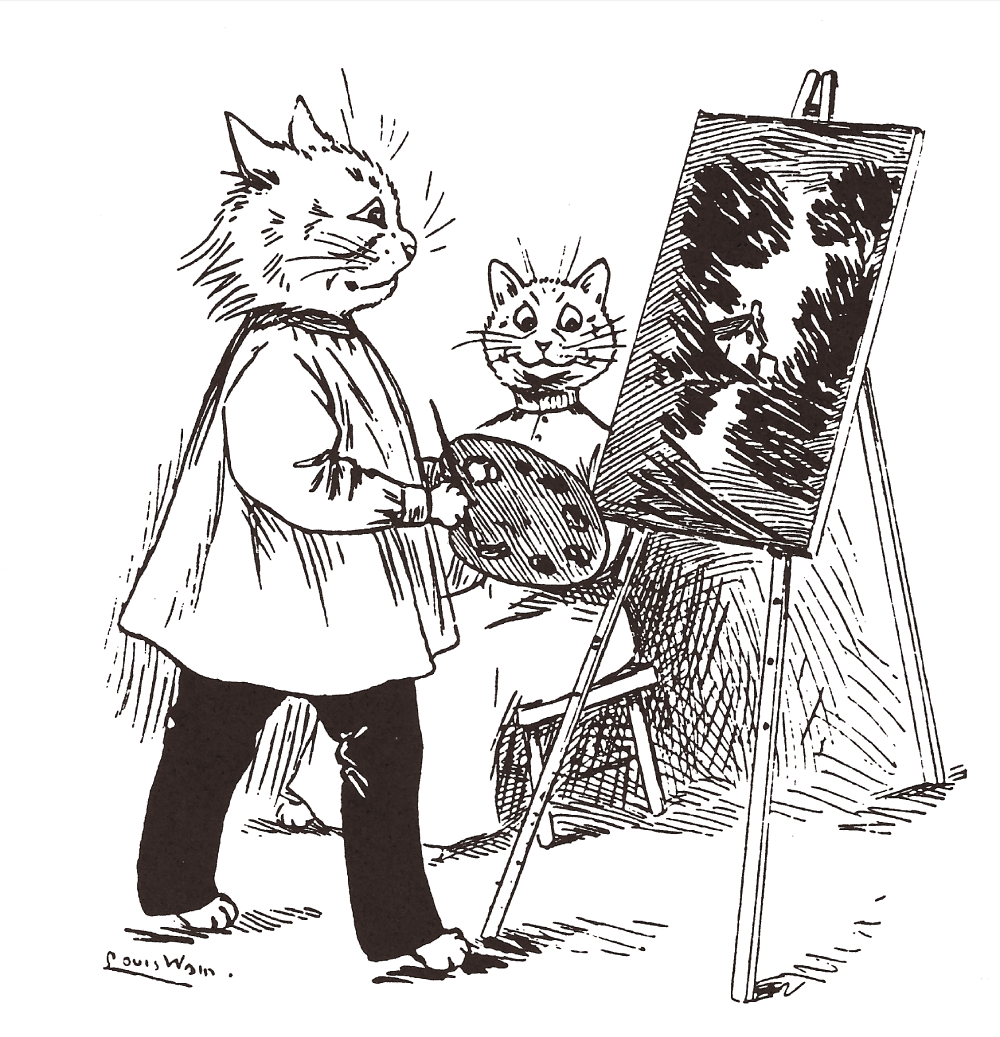Biography
THE LATER YEARS
In the 1920s, his lifelong eccentricity began to give way to paranoid delusions, violent behavior, and a distorted sense of reality that put increasing (and ultimately unsustainable) pressure on his remaining sisters, and in 1924 he was certified insane and sent to a pauper ward at Springfield Mental Hospital. Eventually the ward was visited by bookseller Dan Rider, who “rediscovered” Wain and began bringing news of his plight to the public that had largely forgotten him but still fondly remembered his drawings from their youth.

"Good Lord, man, you draw like Louis Wain."
"I am Louis Wain", replied the patient.
"You're not, you know", I exclaimed.
"But I am," said the artist, and he was.¹
Exhibits of his work, from his earliest publishings to his hospital drawings, were then organized and the Louis Wain Fund established. Supported by figures like H. G. Wells and Prime Minister Ramsay MacDonald, his sisters were able to collect enough money to transfer him out of the paupers ward and into Bethlem Royal Hospital, where he remained afflicted by delusions but was provided better care. His artistic flow never ceased, and he provided Christmas decorations painted on mirrors that are still kept at Bethlem to this day, while his smaller works were taken home by his sisters to sell. After five years at Bethlem, another collection allowed his transfer to Napsbury, where he found the most peace and stability since the onset of his illness (the exact nature of which is still debated.)¹
Comforted by the presence of stray cats on Napsbury grounds and provided care as best as could be expected for the late 1920s, his art took a turn for the psychedelic, and he developed a unique style that would later become as iconic as his earlier cartoons. The Napsbury cats were often blue and brown tabbies with spiky fur, drawn boldly, brightly, having tea or playing golf among expansive and detailed natural environments and gardens and almost always backed by elaborate country houses. When indoors, they lived among flowers and intricate textile patterns, and took on wild, playful expressions. At the same time as these more conventional drawings, he explored styles that resembled nothing so much as the psychedelia that would emerge decades later, the cats melding with their background into a single surreal whole that at times approached complete abstraction. As at Bethlem, he decorated the ward for Christmas and drew sketches for doctors and visitors alike. In 1938, he suffered a stroke, and died 9 months later on July 4th, 1939.
Guide
1: Beetles, C. (2011). Louis Wain’s Cats. WorthPress Ltd.
2: Dr David O'Flynn (February 7th, 2013), Louis Wain Exhibition, Bethlem Archive and Museum, SLaM [YouTube]
3: David Tibet & Paul Moody (October 18, 2018) - The Forgotten Artist Who Changed the Way We Look At Cats [Text]
4: A Celebrated Cat Artist. Mr. Louis Wain Chats with “Chums.” (1895, November). Chums, 204.
